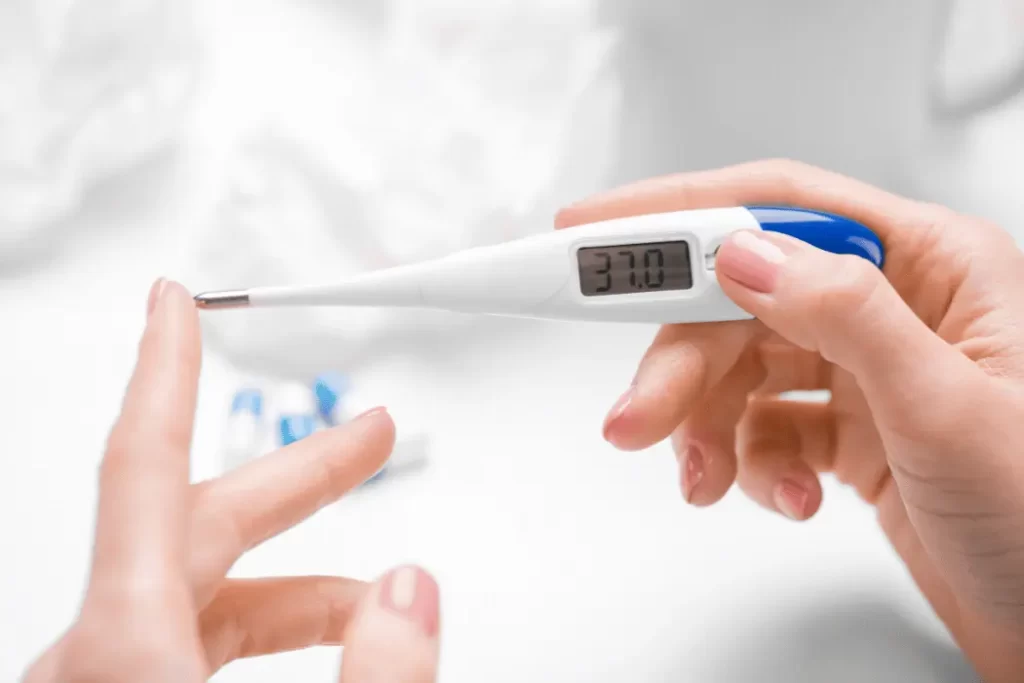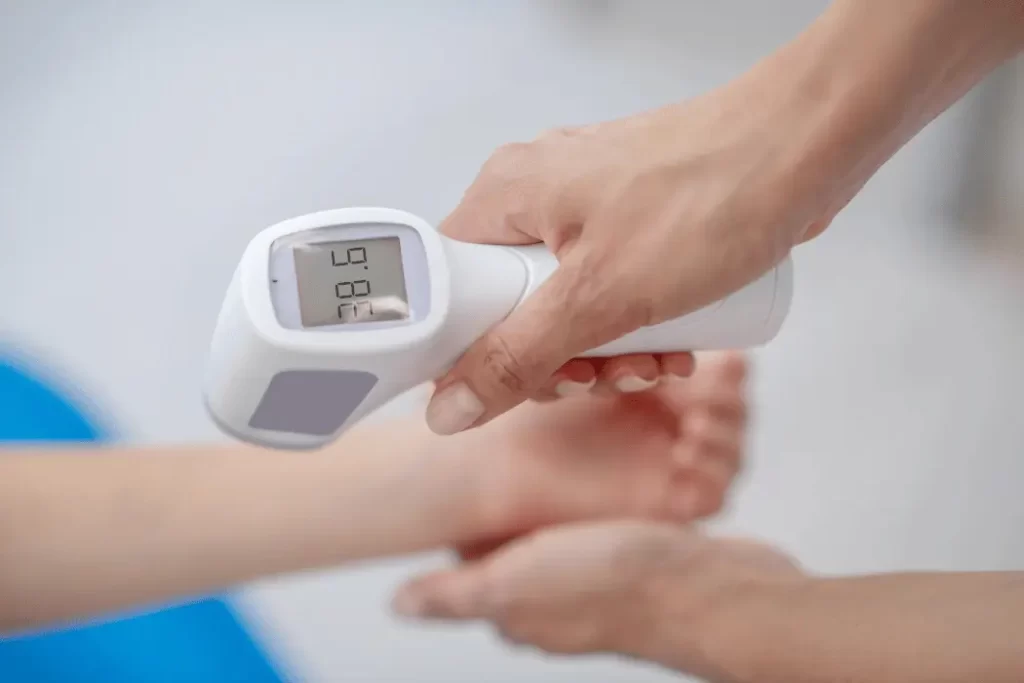In today’s fast-paced world, accurate and efficient temperature monitoring has become more important than ever before. Whether it’s for medical purposes, food safety, or simply to keep track of the temperature in our surroundings, having a reliable digital thermometer can make a significant difference. When it comes to digital thermometers and their accurate and efficient temperature monitoring capabilities, reliable sources of knowledge, such as scientific studies and expert recommendations, are essential for staying informed. This article explores the benefits of digital thermometer, their various types, and their applications in different industries.
Temperature measurement is a critical aspect of our daily lives. From diagnosing illnesses to ensuring food safety, accurately monitoring temperature is essential. Digital thermometers have revolutionized temperature measurement, offering accuracy, convenience, and efficiency.
The Importance of Temperature Monitoring
Temperature monitoring plays a vital role in various industries and settings. In healthcare, precise temperature readings are crucial for diagnosing illnesses, monitoring patient recovery, and administering medications. Similarly, the food industry relies on temperature monitoring to ensure food safety, prevent bacterial growth, and maintain product quality. Industrial processes, research laboratories, and even home environments benefit from accurate temperature monitoring.

Understanding Digital Thermometer
Types of Digital Thermometer
Digital thermometer come in several types, each catering to specific needs. The common types include:
- Oral Digital Thermometer: These thermometers are used to measure body temperature orally and are suitable for both children and adults.
- Rectal Digital Thermometer: Rectal thermometers provide highly accurate readings and are commonly used for infants and young children who cannot cooperate during oral measurements.
- Ear (Tympanic) Digital Thermometer: These thermometers measure temperature by scanning the ear canal and are quick and non-invasive. They are widely used in medical settings.
- Forehead (Temporal Artery) Digital Thermometer: Temporal thermometers use infrared technology to measure temperature from the temporal artery on the forehead. They are non-invasive and provide fast readings.
How Digital Thermometer Work
Digital thermometer utilize a temperature sensor and electronic circuitry to measure and display temperature readings. The sensor detects temperature changes and converts them into electrical signals. The circuitry processes these signals and displays the corresponding temperature value on the device’s screen.
Advantages over Traditional Thermometer
Digital thermometer offer several advantages over traditional mercury or glass thermometers. These include:
- Accuracy: Digitalthermometers provide highly accurate temperature readings, allowing for precise monitoring and diagnosis.
- Speed: Digital thermometer deliver quick results, often within seconds, making them efficient for time-sensitive situations.
- Convenience: The digital display of temperature readings eliminates the need for manual interpretation, making it easier for users to obtain accurate measurements.
- Safety: Unlike traditional thermometers that contain mercury, digital thermometers are mercury-free, eliminating the risk of exposure to toxic substances.
- Memory Function: Many digital thermometer have built-in memory features that store previous temperature readings, enabling users to track temperature trends over time.
Applications of Digital Thermometers
Medical Industry
In the medical field, digital thermometers are extensively used for measuring body temperature. They provide healthcare professionals with reliable and instant readings, aiding in the diagnosis and monitoring of various conditions. From hospitals and clinics to home healthcare settings, digital thermometers are a staple tool for accurate temperature assessment.
Food Safety
Temperature control is crucial in the food industry to ensure the safety and quality of products. Digital thermometer enable food service professionals to monitor cooking temperatures, refrigeration, and storage conditions accurately. By maintaining proper temperature ranges, the risk of bacterial growth and foodborne illnesses is significantly reduced.
Industrial Sector
Various industrial processes require precise temperature monitoring to ensure optimal conditions. Digital thermometers are utilized in manufacturing, laboratory settings, and HVAC systems to monitor equipment temperature, detect abnormalities, and prevent malfunctions. Accurate temperature measurements contribute to process efficiency, product quality, and equipment longevity.
Home Use
Digital thermometers have found their way into households, offering individuals a convenient tool for monitoring their health and the well-being of their family members. From checking body temperature during illnesses to measuring ambient room temperature, digital thermometer provide an accessible and reliable solution.
Factors to Consider When Choosing a Digital Thermometer
When selecting a digital thermometer, several factors should be taken into account:
Accuracy and Precision
Look for thermometers with high accuracy and precision levels to ensure reliable temperature readings. Consider models with clinical-grade accuracy for medical purposes.
Response Time
For quick and time-sensitive measurements, opt for thermometers with fast response times. This is particularly important in medical emergencies or when monitoring temperature changes in industrial processes.
Ease of Use
Choose a thermometer that is user-friendly and intuitive. Clear instructions, easy-to-read displays, and simple operation enhance the overall user experience.
Additional Features
Some digital thermometers come with extra features like fever alarms, memory storage, and backlight displays. Consider the specific requirements of your intended use to determine which additional features would be beneficial.

Tips for Proper Usage of Digital Thermometers
To ensure accurate and consistent temperature measurements, follow these tips:
Calibration
Regularly calibrate your digital thermometer according to the manufacturer’s instructions. Calibration ensures accurate readings and eliminates any potential deviations.
Hygiene and Cleaning
Maintain proper hygiene by cleaning the thermometer before and after each use. Follow the manufacturer’s guidelines for cleaning and disinfection methods to prevent cross-contamination.
Battery Management
Keep spare batteries on hand to avoid unexpected power depletion. Replace batteries as needed to maintain accurate temperature measurements.
Storing and Transporting
Store your digital thermometer in a protective case to prevent damage and maintain its accuracy. When transporting the thermometer, ensure it is adequately protected to avoid any impact or shock.
Conclusion
Digital thermometer have revolutionized temperature monitoring by offering accuracy, efficiency, and convenience across various industries and settings. From healthcare to food safety and industrial applications, these modern devices have become indispensable tools for accurate temperature assessment. By understanding the different types of digital thermometer, their advantages, and proper usage tips, users can make informed decisions and ensure accurate temperature monitoring.
FAQs
Q: How do I clean a digital thermometer?
Answer: To clean a digital thermometer, gently wipe the probe with a clean cloth or use a cotton swab moistened with rubbing alcohol. Avoid submerging the entire thermometer in water, as it may damage the electronic components.
Q: Can I use a digital thermometer for measuring the temperature of liquids?
Answer: Yes, many digital thermometers can be used to measure the temperature of liquids. However, it’s important to check the thermometer’s specifications to ensure it is suitable for liquid temperature measurements and follow the manufacturer’s instructions for proper usage.
What is a digital thermometer?
Answer: A digital thermometer is an electronic device used to measure temperature accurately. It uses electronic sensors to detect and convert temperature readings into digital signals, displaying the results on a digital screen.
How does a digital thermometer work?
Answer: Digital thermometers work by utilizing temperature sensors, such as thermistors or thermocouples, to measure temperature. These sensors detect changes in temperature and convert them into electrical signals. The signals are then processed by the thermometer’s microprocessor, which displays the temperature reading on a digital screen.
Are digital thermometers accurate?
Answer: Yes, digital thermometers are generally accurate. However, accuracy may vary depending on the quality and calibration of the thermometer. It is recommended to use digital thermometers that are certified by regulatory authorities and regularly calibrated for precise and reliable temperature measurements.


